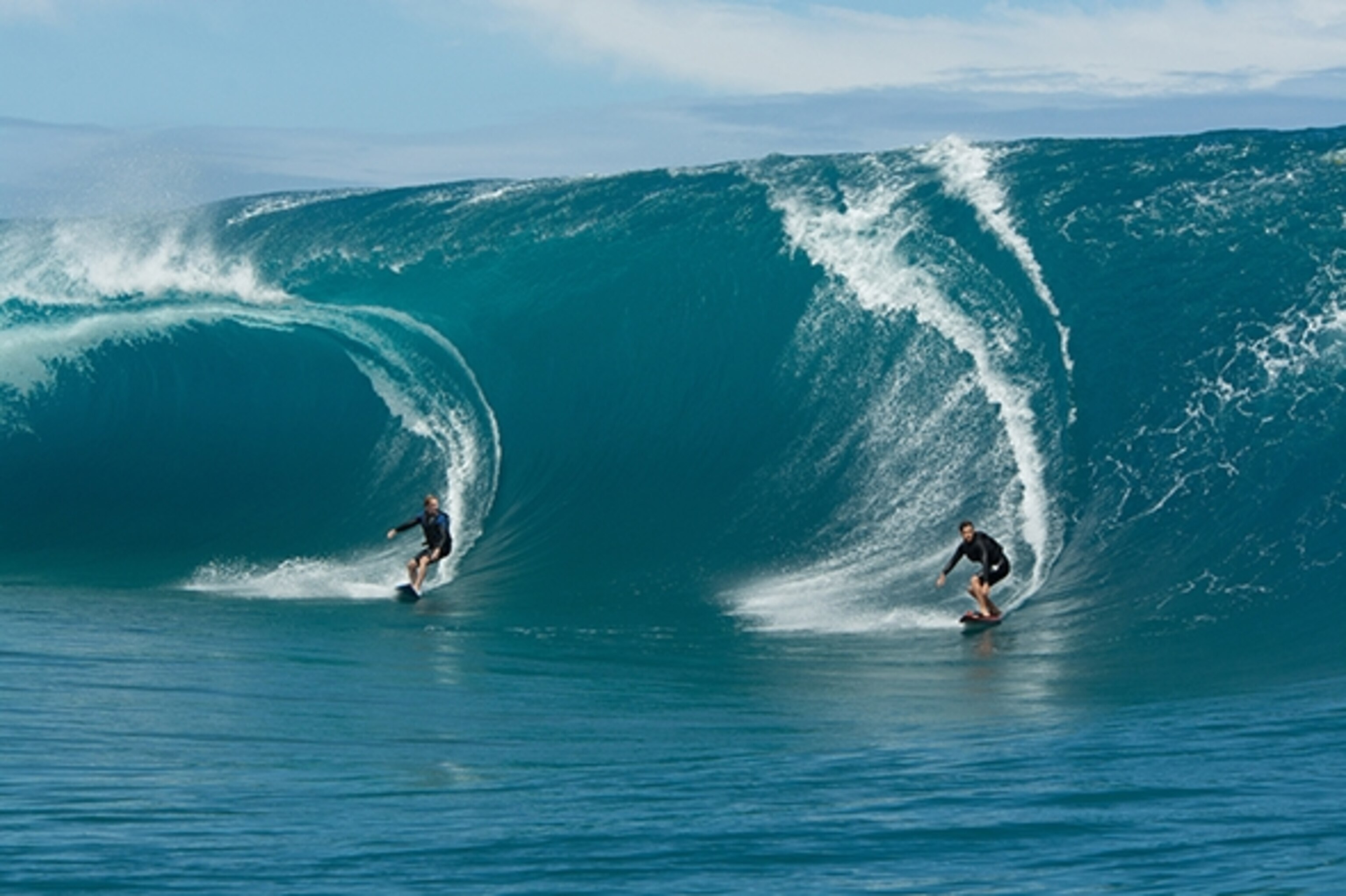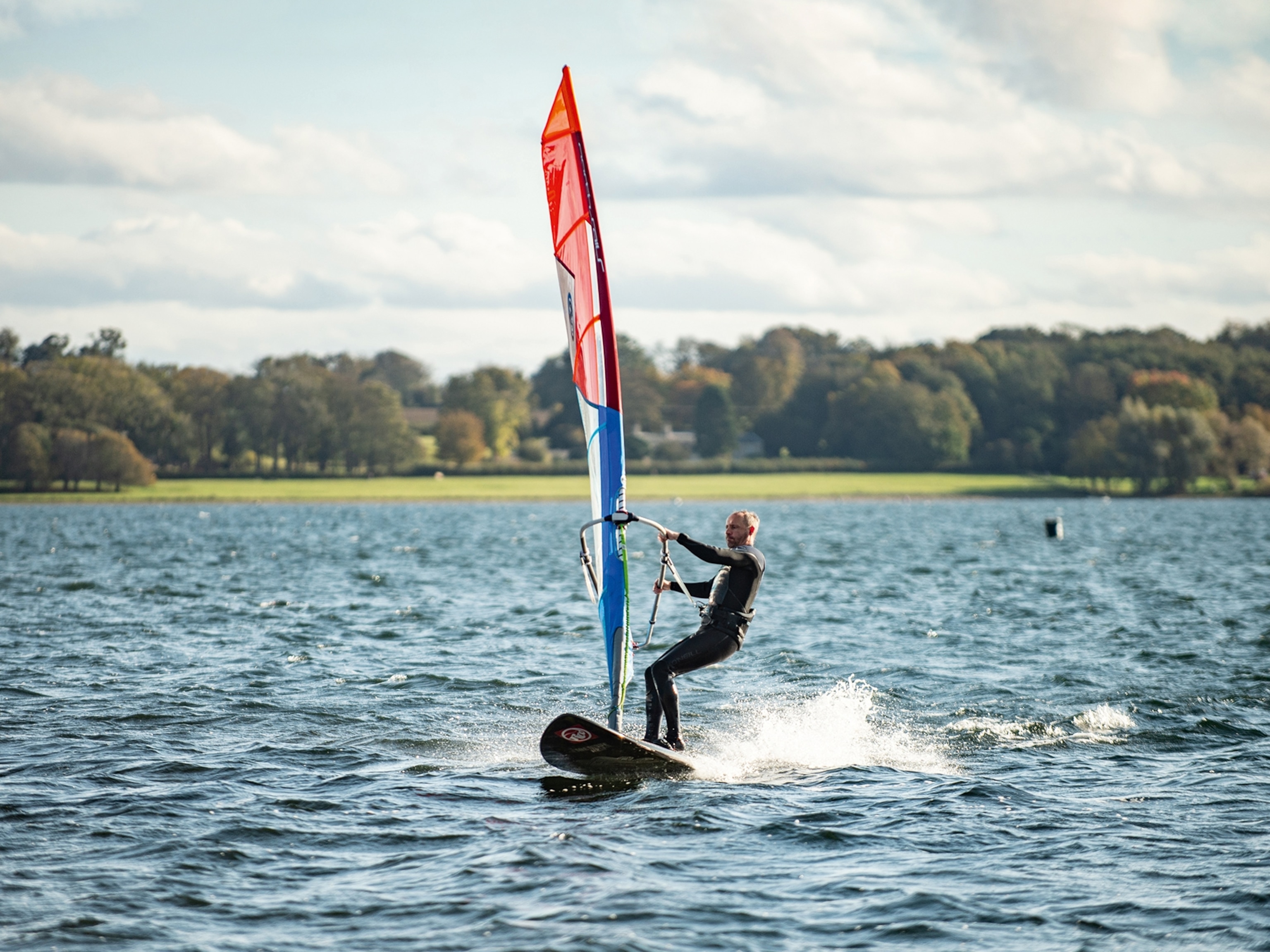
Faster, Bigger, More Extreme: A ‘Point Break’ Remake for Today’s Hard-Charging World
The 1991 release of Point Break was a perfect preface to the next decade, in which adventure sports, then called extreme sports, rose out of obscurity and gripped the mainstream consciousness in a big, bold way.
Directed by Kathryn Bigelow (The Hurt Locker, Zero Dark Thirty), this campy film, now a cult classic, tells the story of a group of bank robbers called the Ex-Presidents, whom the FBI suspect to be surfers. A young, promising FBI agent, Johnny Utah (Keanu Reeves) goes undercover and infiltrates a macho surf scene, whose de facto leader, Bodhi (Patrick Swayze), turns out to be robbing banks simply to finance an endless summer of chasing waves and skydiving out of planes.
“This was never about money for us,” says Bodhi, preaching to his surf-bum disciples around a beach campfire. “It was about us against the system. That system that kills the human spirit. We stand for something to those dead souls inching along the freeways in their metal coffins—we show them that the human spirit is still alive.”
Cheesy lines (which are notoriously abundant in the film) aside, for many Gen Xers, Point Break was the very first articulation of a lifestyle in which the pursuit of passion, adventure, and living on the edge wasn’t just some pointless thing you did in your free time. It was the very point of living. Perhaps that’s why, after all this time, Point Break endures.
Fast forward 15 years, and Bodhi’s seductive mantras have remained firmly entrenched in today’s culture of adventure sports, which have, in the interim, gotten faster, bigger, and, yes, more extreme, if not deadly.
It’s fitting, then, that Point Break be updated to reflect this new, hard-charging world, which is exactly what director Ericson Core has done, casting Luke Bracey as Utah and Edgar Ramirez as Bodhi. Whereas the first film featured only surfing and skydiving, the latest one showcases high-speed snowboarding in the Italian Alps, rock climbing on Venezuelan tepuis, big-wave surfing on the notorious Hawaiian wave Jaws, and wingsuit BASE jumping off an exit point called Sputnik above Walenstadt, Switzerland. (The latter location was made famous in Jeb Corliss’ YouTube video
Core brought in the some of the best athletes respective to each of these sports to perform the stunts that appear in the film, eschewing the typical Hollywood approach of using CGI effects. Mike Basich, Xavier de la Rue, Ralph Backstrom, and Mitch Toelderer are the snowboarders who ride steep backcountry outside Courmayeur, Italy. Ian Walsh assembled a team of surfers that included himself, Billy Kemper, Makua Rothman, and Ahanu Tson-dru for the Jaws sequence.
In an interview
Big-wave surfer Laird Hamilton, who collaborated on the surf stunts in the original film, returned with Bruce Irons and Laurie Towner to film on Teahupo’o, Tahiti.
Corliss served as the wingsuit unit director for the film, assembling who he dubbed “the best wingsuit pilots in the world.” That team included Mike Swanson, Julian Boulle, Noah Bahnson and Jon Devore, with James Boole and Jhonathan Florez as the wingsuit camera operators.
Chris Sharma and Dani Andrada performed as the climbing stunt doubles for Bodhi and Utah on location at the Venezuelan tepuis, and they received rigging assistance from some of the biggest names in the climbing world, including Peter Croft, Dave Shultz, and Brooke Sandahl.

“Sure, it would have been a hell of a lot easier to shoot these scenes on a green-screen stage in Atlanta,” said Core in an article
For example, a team of six wingsuit pilots logged over a hundred jumps during the five weeks of shooting in Switzerland. And Towner reportedly broke his jaw while surfing in Teahupo’o.
If the 1990s birthed adventure sports, then one hopes this year they’ll come of age. Questions of consequence and risk are certainly becoming an increasingly grim reality for many in the adventure-sports community. In the last year alone, the number of deaths of extreme athletes, particularly wingsuit BASE jumpers and big-mountain skiers, has been staggering, especially given that many were considered to be the best in their sport.
Dean Potter and Graham Hunt, both experienced BASE jumpers, died Andreas Fransson and JP Auclair
And Jhonathan Florez, one of the two cameramen filming the aerial sequences in the new Point Break, died in a wingsuit accident on July 3. He was filming for another project, and it’s not hard to imagine that the same fate could’ve just as easily been met on the set of Point Break.
The skydiving sequences in the first Point Break inspired many to try the sport for themselves, and it’s been observed that in 1992, the year following the film’s release, skydiving registrations jumped, so to speak.
“The first Point Break was an inspiration for my generation of action sports athletes, and I hope this reimagining of the film will inspire the next generation,” says Corliss. If history repeats itself, we might expect to see an increase in extreme snowboarding, climbing, surfing, and wingsuit BASE jumping over the next year.

Yet for all that’s changed in adventure sports since 1991, in other ways it’s exactly the same. As Bodhi professes in the first film, “If you want the ultimate, you’ve got to be willing to pay the ultimate price. It’s not tragic to die doing what you love.”
It’s a mantra that, for better or worse, many still cling to.
In the face of so much recent tragedy, it’s easy to lose sight of the reason why we do these sports. For most, it’s ultimately not about the money, as Bodhi says. The extreme athletes, whose talents are showcased in this new film, however, are great examples that the human spirit is still very much alive.
Point Break hits theaters on December 25.
You May Also Like
Go Further
Animals
- This ‘saber-toothed’ salmon wasn’t quite what we thoughtThis ‘saber-toothed’ salmon wasn’t quite what we thought
- Why this rhino-zebra friendship makes perfect senseWhy this rhino-zebra friendship makes perfect sense
- When did bioluminescence evolve? It’s older than we thought.When did bioluminescence evolve? It’s older than we thought.
- Soy, skim … spider. Are any of these technically milk?Soy, skim … spider. Are any of these technically milk?
- This pristine piece of the Amazon shows nature’s resilienceThis pristine piece of the Amazon shows nature’s resilience
Environment
- This pristine piece of the Amazon shows nature’s resilienceThis pristine piece of the Amazon shows nature’s resilience
- Listen to 30 years of climate change transformed into haunting musicListen to 30 years of climate change transformed into haunting music
- This ancient society tried to stop El Niño—with child sacrificeThis ancient society tried to stop El Niño—with child sacrifice
- U.S. plans to clean its drinking water. What does that mean?U.S. plans to clean its drinking water. What does that mean?
History & Culture
- Meet the original members of the tortured poets departmentMeet the original members of the tortured poets department
- Séances at the White House? Why these first ladies turned to the occultSéances at the White House? Why these first ladies turned to the occult
- Gambling is everywhere now. When is that a problem?Gambling is everywhere now. When is that a problem?
- Beauty is pain—at least it was in 17th-century SpainBeauty is pain—at least it was in 17th-century Spain
- The real spies who inspired ‘The Ministry of Ungentlemanly Warfare’The real spies who inspired ‘The Ministry of Ungentlemanly Warfare’
Science
- Here's how astronomers found one of the rarest phenomenons in spaceHere's how astronomers found one of the rarest phenomenons in space
- Not an extrovert or introvert? There’s a word for that.Not an extrovert or introvert? There’s a word for that.
- NASA has a plan to clean up space junk—but is going green enough?NASA has a plan to clean up space junk—but is going green enough?
- Soy, skim … spider. Are any of these technically milk?Soy, skim … spider. Are any of these technically milk?
- Can aspirin help protect against colorectal cancers?Can aspirin help protect against colorectal cancers?
Travel
- What it's like to hike the Camino del Mayab in MexicoWhat it's like to hike the Camino del Mayab in Mexico
- Is this small English town Yorkshire's culinary capital?Is this small English town Yorkshire's culinary capital?
- This chef is taking Indian cuisine in a bold new directionThis chef is taking Indian cuisine in a bold new direction
- Follow in the footsteps of Robin Hood in Sherwood ForestFollow in the footsteps of Robin Hood in Sherwood Forest






